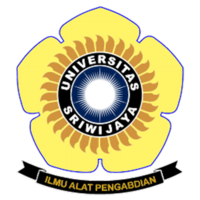Analisis Spasial Kondisi Lingkungan dan Hidrologi Sub DAS Komering Hulu Kaitannya dengan Penurunan Ketersediaan Air
Abstract
Yuono AL, Putranto DDA, Sarino S. 2019. Spatial analysis of environmental and hydrological conditions upper komering sub basin relationship with water availability. In: Herlinda S et al. (Eds.), Prosiding Seminar Nasional Lahan Suboptimal 2019, Palembang 4-5 September 2019. pp. 430-436. Palembang: Unsri Press.
Potential water resources in the Komering sub-basin (645.49 m3 / sec), in March (Putranto Dinar DA et al, 2015), should be able to increase national agricultural production in South Sumatra. This study aims to analyze spatially the decreasing availability of water in the Komering sub-basin, where the mainstay discharge in August - September, only 43.08 m3/sec. To analyze the reduced mainstay discharge of the Komering sub-basin, due to poor land use practices in the upstream area and the effects of climate variability, it can be analyzed by the Mock method (1978), by analyzing land cover conditions, the value of rain variability, and the amount of evapotranspiration and validation of direct measurements river discharge. Changes in land use for the upper Komering sub-basin, which are used mostly by the population as community plantation areas, have increased the critical condition of the upper Komering sub-basin by 2,517,560 Km2, or about 65.66% of the total upper Komering sub-basin. From the measurement of debit data at the Perjaya weir in the last fifteen years (2005-2019) the biggest mainstay debit value for 2 weeks to two months in April was 241.67 m3/sec, while the smallest mainstay discharge occurred in the first 2 weeks of October at 54,69 m3/sec. A large enough difference between the largest and smallest mainstay discharge, it is necessary to think of a way so that the availability of water is always maintained throughout the year (the mainstay discharge difference between the rainy season and the dry season so that it is not so extreme). Some ways that can be done to maintain water availability include by making water reservoirs during the rainy season, such as reservoirs and reservoirs, or increasing storage in the soil by reforestation and harvesting methode.
Potential water resources in the Komering sub-basin (645.49 m3 / sec), in March (Putranto Dinar DA et al, 2015), should be able to increase national agricultural production in South Sumatra. This study aims to analyze spatially the decreasing availability of water in the Komering sub-basin, where the mainstay discharge in August - September, only 43.08 m3/sec. To analyze the reduced mainstay discharge of the Komering sub-basin, due to poor land use practices in the upstream area and the effects of climate variability, it can be analyzed by the Mock method (1978), by analyzing land cover conditions, the value of rain variability, and the amount of evapotranspiration and validation of direct measurements river discharge. Changes in land use for the upper Komering sub-basin, which are used mostly by the population as community plantation areas, have increased the critical condition of the upper Komering sub-basin by 2,517,560 Km2, or about 65.66% of the total upper Komering sub-basin. From the measurement of debit data at the Perjaya weir in the last fifteen years (2005-2019) the biggest mainstay debit value for 2 weeks to two months in April was 241.67 m3/sec, while the smallest mainstay discharge occurred in the first 2 weeks of October at 54,69 m3/sec. A large enough difference between the largest and smallest mainstay discharge, it is necessary to think of a way so that the availability of water is always maintained throughout the year (the mainstay discharge difference between the rainy season and the dry season so that it is not so extreme). Some ways that can be done to maintain water availability include by making water reservoirs during the rainy season, such as reservoirs and reservoirs, or increasing storage in the soil by reforestation and harvesting methode.
Keywords: discharge, harvesting, land-use change, resources, spatial
Full Text:
PDFArticle Metrics
Abstract view : 417 timesPDF - 606 times
Refbacks
- There are currently no refbacks.

